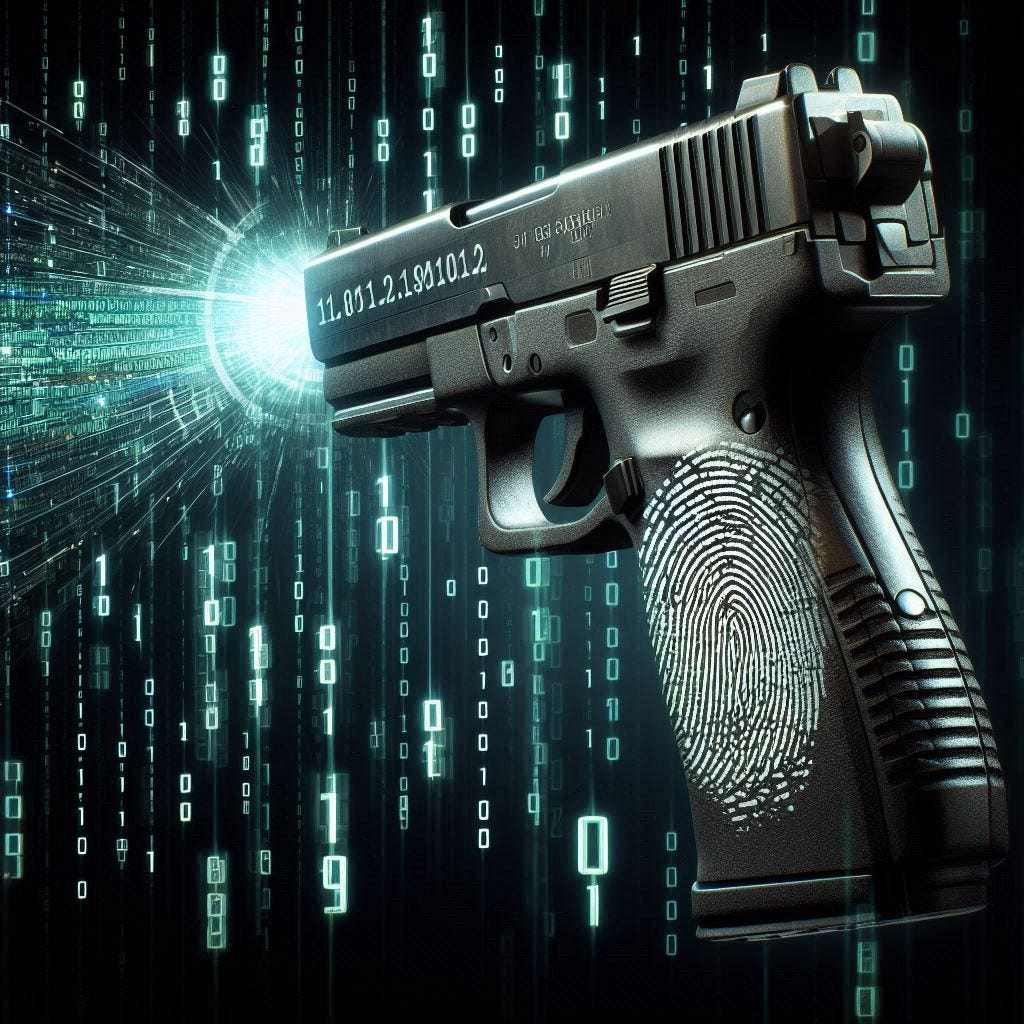In the ongoing battle against gun violence, many law enforcement agencies are turning to crime gun intelligence to sharpen their investigative capabilities, reduce gun-related crime, and enhance community safety. Disappointingly, many are confused as to how to develop, implement, and sustain such capabilities that require participation and more specifically collaboration from others – forensic experts, prosecutors, technologists, and the public.
Crime gun intelligence is not just about collecting ballistic data and evidence —it's about aligning efforts across jurisdictions, layering and leveraging available technologies, and staying committed to justice and accountability. Last week Pete Gagliardi, Joe Brennan and I presented at the International Firearms Forensic Intelligence Summit in Montreal, Canada, hosted by LeadsOnline. There we highlighted the seven principles of crime gun intelligence, which serve as guiding pillars for law enforcement agencies striving to tackle gun-related violence with greater efficiency and empathy.
In this post, we’ll break down the seven key principles of crime gun intelligence and how they can greatly assist law enforcement, policy makers, forensic labs, and prosecutorial entities stay ahead in their collective fight against gun violence by offering smarter, data-driven ways to understand, track, and solve gun-related crimes.
A Shared 'Why' to Keep Things in Perspective: Aligning Our Purpose
Simon Sinek – “the unshakeable optimist” - explains that ‘Why” is the most important message that an organization needs to communicate to inspire action amongst its membership. In the realm of solving gun-related crime that requires the communication, coordination, and collaboration of interdependent entities such as the police, the prosecutors, the public, the forensic labs, and technologists painting the picture of the Why is a simple, yet powerful question: Why?
Why are we collecting all this data? Why are we so focused on firearms and ballistics? The answer, of course, is justice—justice for victims and their families, and justice for communities impacted by violence.
Having a shared “why” keeps everyone on the same page and helps everyone remember why this work matters. It’s not just about solving cases—it’s about making communities safer and helping families heal. By staying focused on the bigger picture, we can ensure their efforts remain meaningful, compassionate, and grounded in the pursuit of justice.
Collect Comprehensive Information: Gathering the Full Picture
When it comes to investigating gun-related crimes, while every detail counts, so does the contextual information needed to link gun crimes together. From ballistic markings on a weapon to gunshot residue on a victim’s clothing, firearms often leave behind critical evidence. Additionally, a license plate noted at the crime scene or in the area of where fired cartridge casings were discovered can prove valuable in the future by providing investigative leads. The more comprehensive the information we gather, the clearer the picture becomes enabling us to pursue investigative leads.
Think about it this way: a small, seemingly unrelated incident—a shooting at a gas station or a road sign—could turn out to be the key to solving a bigger crime. By connecting the dots between different pieces of evidence, analysts and investigators can uncover patterns and link cases that might have seemed completely unrelated at first. This comprehensive approach ensures that every lead is followed, and no detail goes unnoticed.
Balance the 3-Legged Stool: People, Processes, and Technology
To be truly effective, a crime gun intelligence capability in any jurisdiction relies on a three-legged stool—a balance between people, processes, and technology.
People are the foundation— officers, investigators, analysts, forensic technicians, and prosecutors working together, sharing information, and coordinating efforts. Processes ensure that everyone is on the same page, following the right steps, and staying consistent. Technology, like crime mapping tools, ballistics analysis, and data-sharing platforms, help connect all the dots and make sense of the data faster. Together, these elements form a stable, integrated system that drives success.
Each of these elements of the 3-legged stool are critically important. And similar to a physical 3-legged stool if one leg is longer or shorter than the others the stool will topple. Implementing a crime gun intelligence capability requires focused attention on each of the elements to ensure that resourcing and capabilities is aimed squarely and functionally.
Consider the Regional Perspective: Broadening the View
Regrettably, gun violence is not confined to one neighborhood or even one city. Violent criminals often move between cities or across state lines, and so does the evidence. That’s why it’s crucial to think beyond local jurisdictions and adopt a regional perspective.
The National Integrated Ballistic Information Network (NIBIN) allows law enforcement to link crime guns and related crimes over long distances—whether that’s tracking a gun from one state to another or even connecting cases across international borders. When law enforcement agencies work together regionally, they can spot trends, connect crimes, and identify and catch criminals who may have been flying under the radar in a single jurisdiction.
Ensure Timely Processing: Stay on Track
When pursuing trigger pullers, time is often of the essence to stop the next shooting. The longer it takes to process information and evidence related to a shooting event, the harder it can be to connect the dots and the longer armed criminals remain free to do more harm. Timely processing aids law enforcement by staying ahead of criminals by quickly linking cases and identifying patterns.
This principle is all about eliminating bottlenecks that slow things down. By processing evidence faster and more efficiently—whether it’s ballistic data, DNA samples, or crime scene photos—law enforcement can take quicker action, stop suspects before they strike again, and ultimately make our communities safer.
Conduct Relentless Follow-Up: Never Stop
In crime gun intelligence, there’s no such thing as “good enough.” This is where relentless follow-up comes in. It’s about checking in, staying on top of progress, and making sure that no task is left unfinished.
Sometimes, investigations can stall. Vital information can fall through the cracks, but relentless follow-up keeps the momentum going. Whether it’s tracking down leads, ensuring that data is being processed on time, or making sure that cases are being actively worked on, this principle helps maintain focus and accountability. When law enforcement is persistent in following through on every lead and ensuring that “all bases are tagged” whether forensically, investigatively, or from a prosecutorial perspective it ensures that cases keep moving forward—and criminals, their patterns, or their trends do not get the chance to slip through the cracks and go unnoticed.
Review for Continuous Improvement: Constant Growth
The job of combating gun crime isn’t static—it’s constantly evolving. That’s why continuous review is so important. By regularly stepping back to assess what’s working, what is not, and where improvements can be made helps law enforcement stay ahead of the crime curve.
This may involve refining investigative strategies, updating technology, or improving inter-agency collaboration. Reviewing, refining, or adjusting ensures that crime gun intelligence efforts stay relevant and effective. The goal is to always be learning, adapting, and improving so that we can better tackle the evolving challenges inherent to gun violence.
Conclusion
Crime gun intelligence involves more than just evidence and data—it’s about a mindset and a set of principles that guide those involved - law enforcement, forensic, prosecutors, the public, and technologists - in their pursuit of justice. By staying focused on a shared purpose, collecting comprehensive information, and balancing people, processes, and technology, we can tackle gun crime more effectively.
By embracing these principles and committing to continuous improvement, we can stay one step ahead of criminals, build stronger communities, and ultimately reduce gun violence. While the road to a safer society may be long, crime gun intelligence, can be the modern superhighway along the most direct route.
*** If you are interested in taking a deeper dive into the realm of Crime Gun Intelligence I urge you to take our course entitled Your Roadmap to Mastering Crime Gun Intelligence. Registered users of The RF Factor Substack will receive a 50% discount. ***
Direct message The RF Factor through Substack for your special coupon code.
Check out this recent course review from former ATF Director Brad Buckles:
Why did it take so long to learn these lessons?
This is a powerful training course and a game-changing approach to fighting gun violence. Case by case individual gun crime investigations provide an incomplete and ineffective approach to reducing gun violence. Too many cases will remain unsolved, and too many offenders will kill again, unless all of our efforts are made to maximize the benefits of comprehensive intelligence. Since the gun violence of the 1960s led to the enactment of the Gun Control Act of 1968, fighting gun violence has focused on individual criminals and lengthy sentences on one end, and the regulation of firearms on the other as the solutions to gun crime. While there is a place for both approaches, the fact remains that neither has been or will be the solution. Crime Gun Intelligence provides a better road to success in reducing gun violence moving forward. Congrats to the authors of this course for their years of law enforcement service and for producing this truly groundbreaking training.






